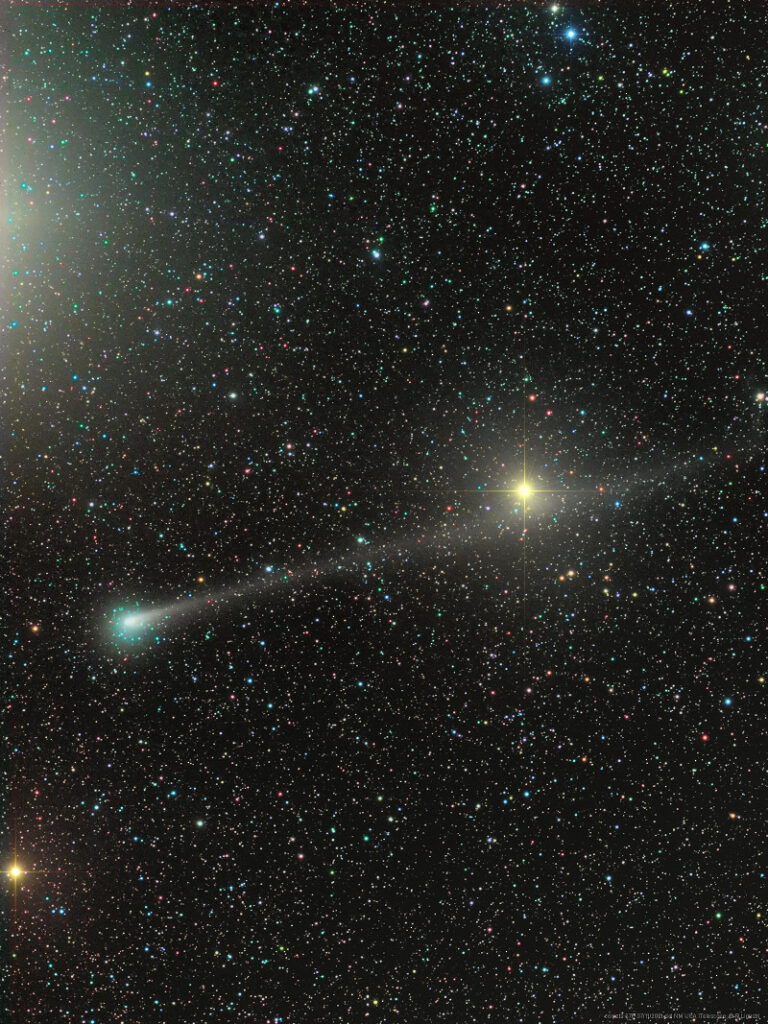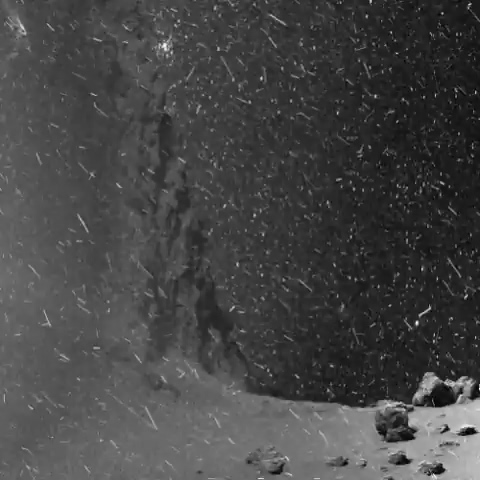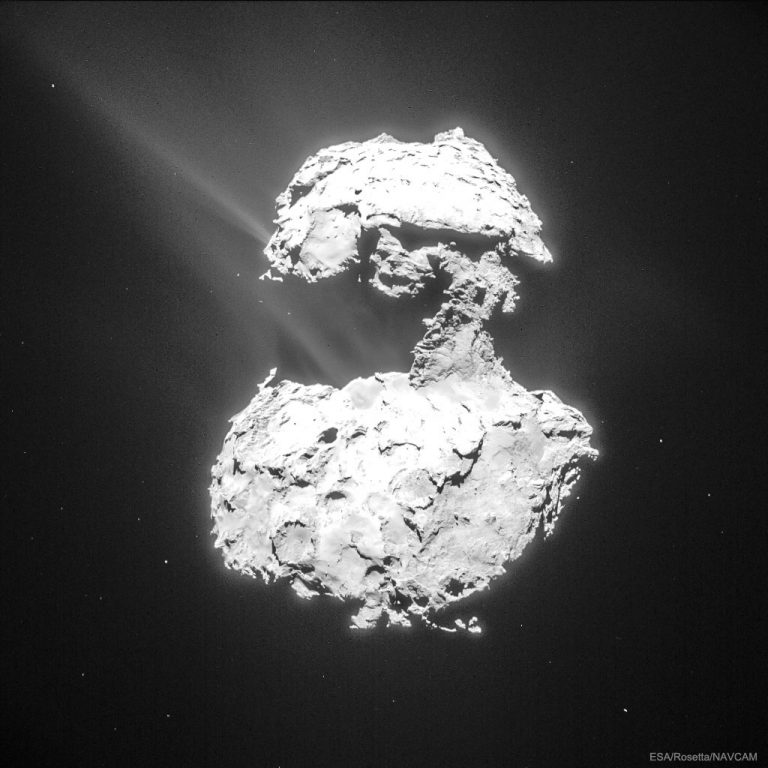丘泽彗星的雪
2024年1月6日 The Snows of Churyumov-Gerasimenko Images Credit: ESA, Rosetta, MPS, OSIRIS; UPD/LAM/IAA/SSO/INTA/UPM/DASP/IDA; Animation: Jacint Roger Perez Explanation: You couldn’t really be caught in this blizzard while standing by a cliff on periodic comet 67P/Churyumov-Gerasimenko. Orbiting the comet in June of 2016, the Rosetta spacecraft’s narrow angle camera did record streaks of dust and ice particles similar to snow as they drifted across the field of view close to the camera and above the comet’s surface. Still, some of the bright specks in the scene are likely due to a rain of energetic charged particles or cosmic rays hitting the camera, and the dense background of stars in the direction of the constellation of the Big Dog (Canis Major). In the video, the background stars are…






